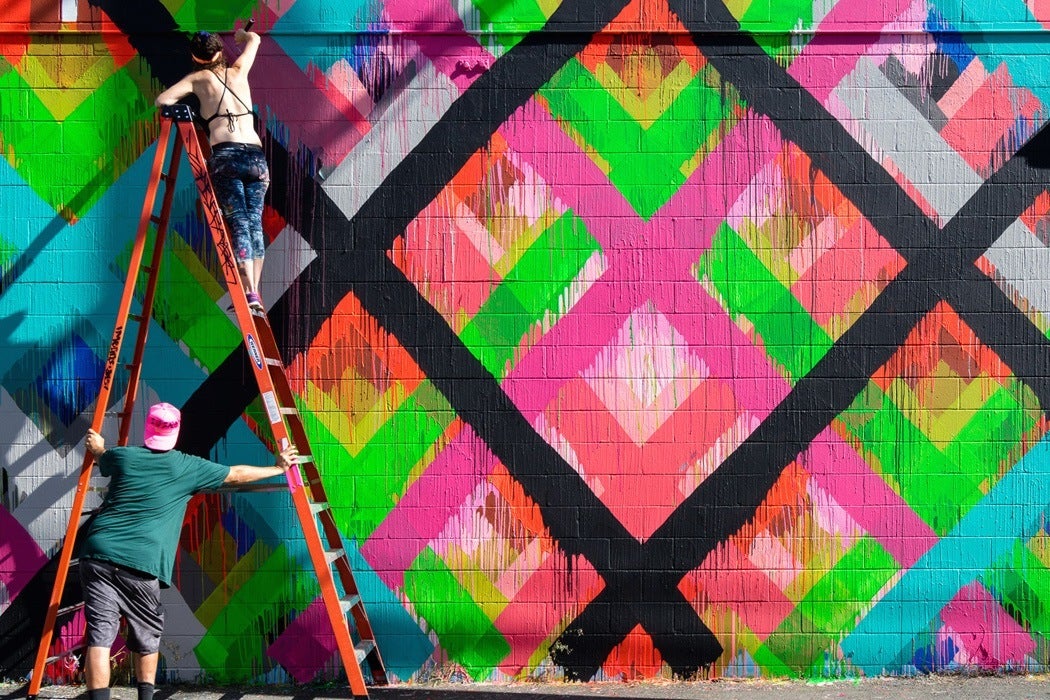The team behind POW! WOW! Hawaii is bringing the growing street art gathering to Long Beach, CA June 22-28th. During this week-long celebration, a network of international artists come together to engage with the community, offering gallery shows, educational events and workshops, concerts, and transforming public urban spaces into street art installations throughout the week.
Street art has not always had a clearly defined reputation in the art world. In fact, in Nicholas Alden Riggle’s 2010 study of street art, he posits that street art’s definition is contingent upon its being outside art: “Imagine a practice whose artworks are largely disconnected from the artworld because their significance hinges on their being outside of that world.” He poses questions about how we, as a culture, can blend art with the everyday:
How could there be an art practice that requires in a manner of speaking, taking art out of the museum, gallery, and private collection–ultimately, out of the artworld–and putting it into the fractured stream of everyday life? How could there be post-museum art?
But, in this respect, Riggle’s argument for street art as “post-museum art” is actually quite limited. While street art is physically outside of the museum confines on freeway or building walls, what the Pow! Wow! gatherings are proving is that street art and the art world are now in alliance with one another, rather than in opposition.
In California, for instance, the Long Beach Museum of Art is opening a show to coincide with the events, inviting twenty international artists to take over the museum space through installations and murals, thus bringing the art generally reserved for the street into the bastion of high art. More and more, scholars and art historians are studying the art and artists who fuel these events.
In “Street Art: Prints and Precedences” for Art in Print, Gill Saunders notes that, “[i]ncreasingly street artists themselves work in a number of different arenas, physical and virtual, indoors and out, legitimate and illegal.” He argues that print imagery has actually established a precedent for street art, conditioning audiences and making them more ready to accept street art:
Print has a long history as a public art, infiltrating the public arena and playing a part in the information exchange of the street.
This open dialog and “exchange of the street” is key to both street art and our globalized art market, bringing public street art into private, coveted museum spaces and likewise transforming more private studio work into expansive public murals, all while blurring conventional rules of the who, where, and what of high and low art.







